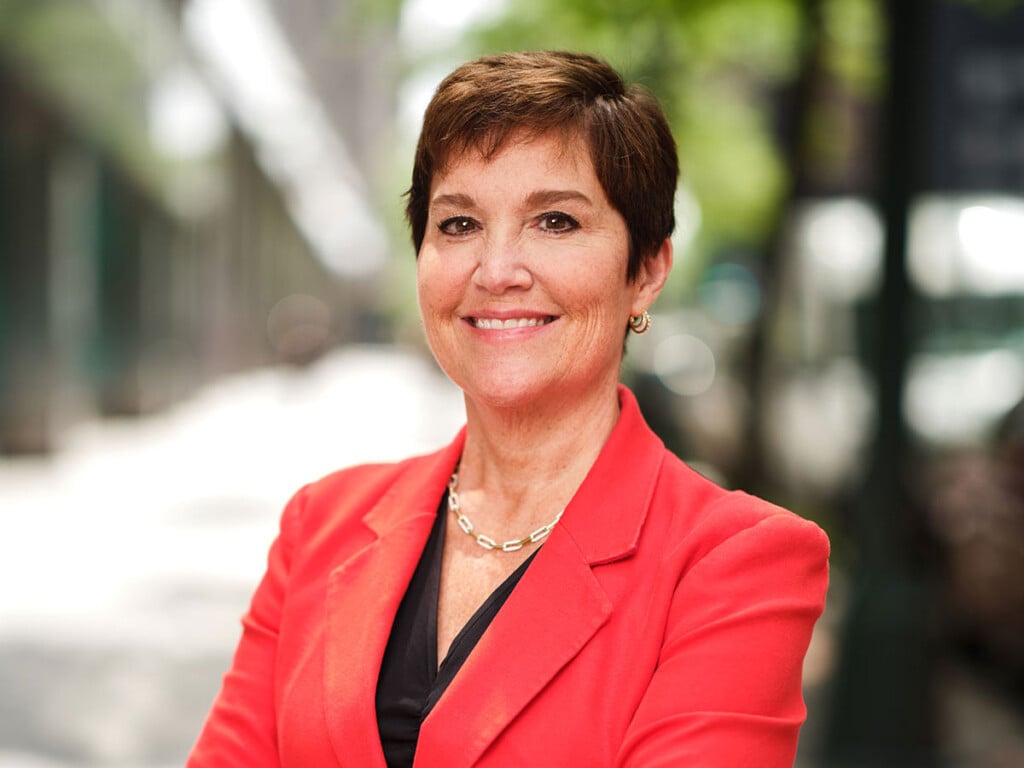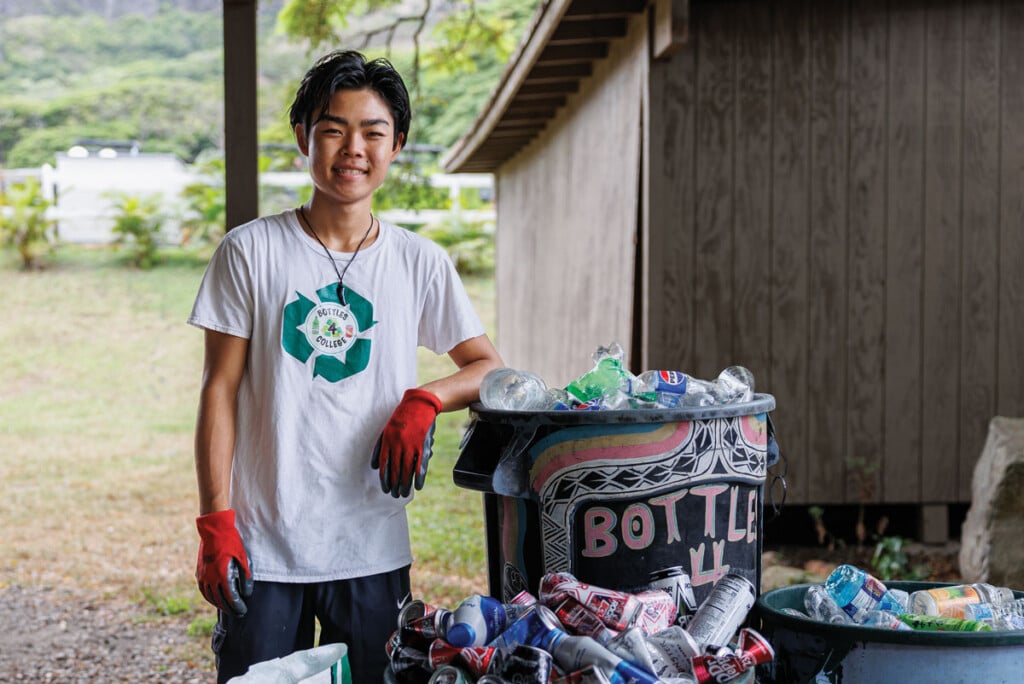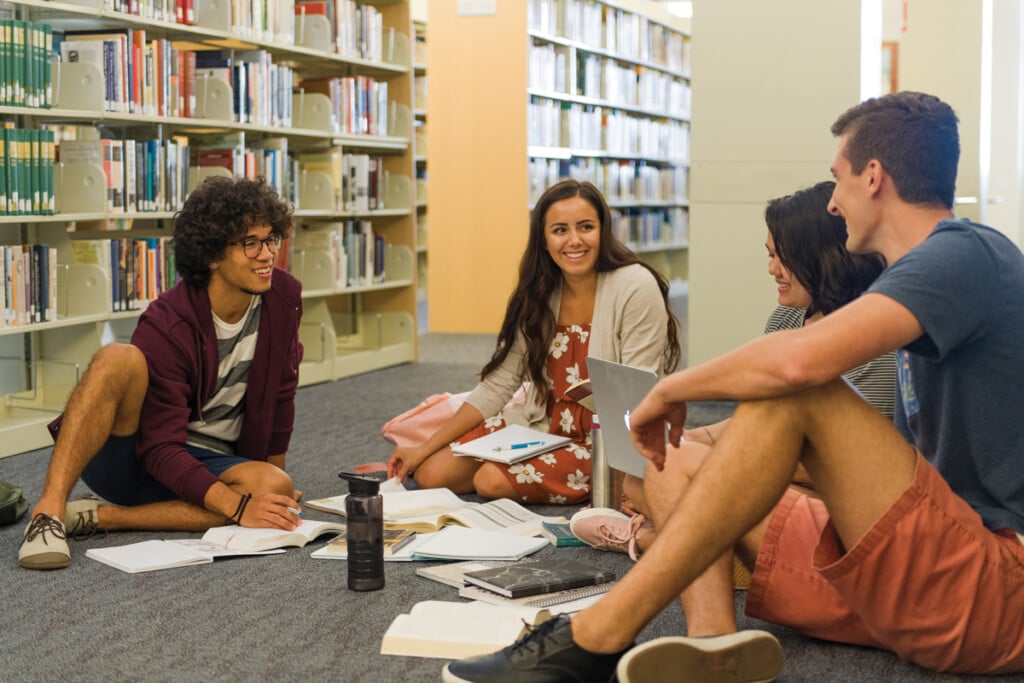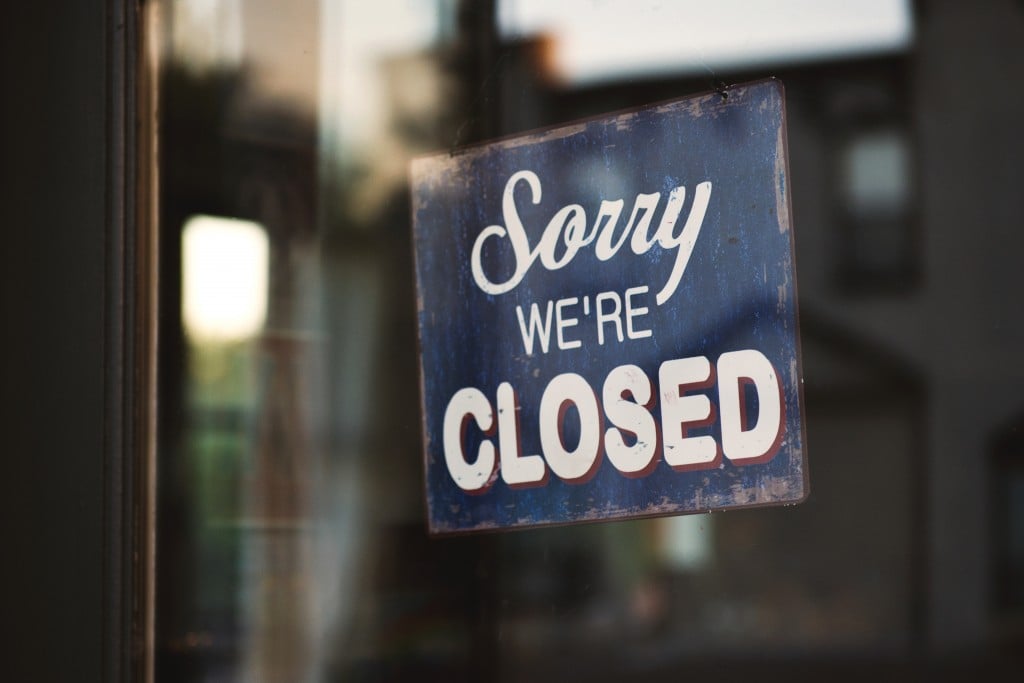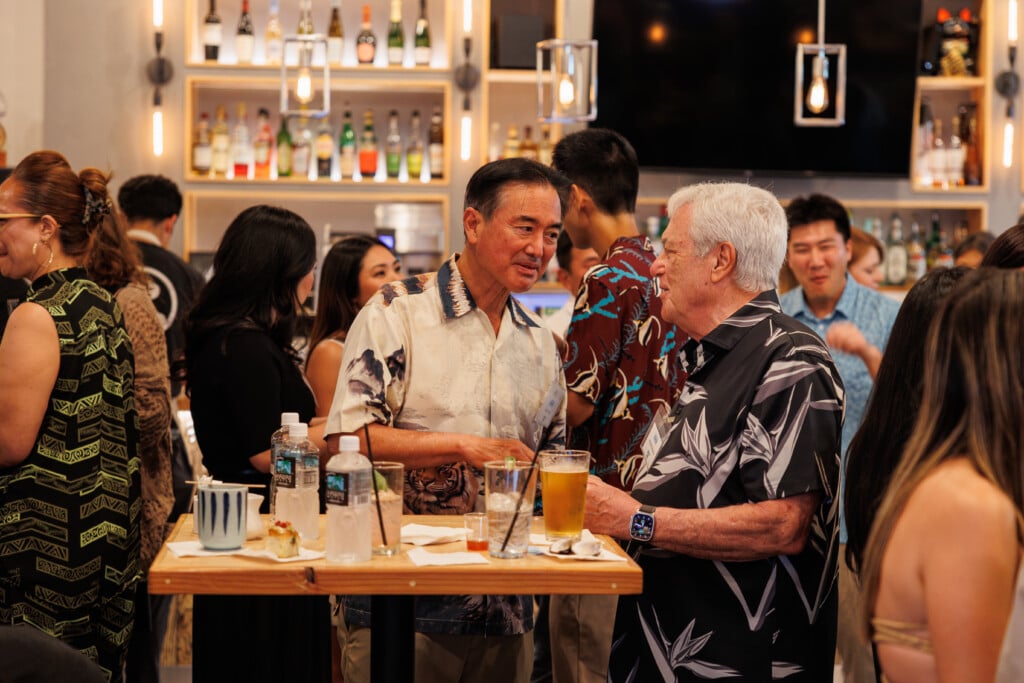How Did Thousands of Hawai‘i’s Students Vanish—And Can We Get Them Back?
Hawai‘i’s schools switched to distance learning last March. A year later, some still have not logged in to classes.

On days when the internet is slow at ‘Ilima Intermediate School, Sarah “Mili” Milianta-Laffin says it’s like she’s teaching STEM to blank squares on a screen. “Poor internet connection is one of our biggest hurdles as a Title I school,” she says, referring to its high number of low-income families.
At Kaua‘i High School, language arts teacher Jon Medeiros is looking for students who have simply not shown up on his screen. Out of his 135 kids, there are five he has not been able to reach despite repeated phone calls and emails. “If a student is in front of me in person, it’s harder for them to avoid me,” he says. “I can ensure they participate. But the pandemic has made it too easy for them to disappear.
“It’s like they’ve completely vanished. And those kids worry us. Are they safe? Are they learning?” Medeiros says. “And if their internet is the problem, we have devices or hot spots they can pick up at the school. But if we can’t reach them, how can we help them?”
Milianta-Laffin and Medeiros are just two out of thousands of teachers grappling with their students’ connectivity issues and the challenge of keeping kids engaged when they’re miles away. A year of distance learning has disrupted the lives of nearly every family in Hawai‘i that suddenly had to deal with new online programs and balance work, school, family and life under one roof.
But some were cut off altogether. Kids and teachers in both rural and urban areas just couldn’t get online. Others who were already struggling pre-COVID-19 fell even farther behind. And it will take a network of tech gurus, educators, state officials and broadband providers to bring our keiki back.

A Widening Gap
When the pandemic first hit and schools closed last March, a state Department of Education survey indicated nearly 30% of families lacked devices for distance learning and 24% lacked reliable internet at home. Children who were in foster care or whose families were living in shelters, public housing or with other families due to economic hardships were impacted most. The survey also showed that Native Hawaiian and other Pacific Islander families were less likely to have resources they needed to keep their kids in class.
The first and, in many ways, the simplest step was to tackle the device shortage. The DOE used federal funds to purchase 52,244 Chromebooks, iPads and other similar devices as well as 17,347 wi-fi hot spots. It also rolled out solar-powered mobile vans with wireless access across the Islands, set up a tech phone hotline and worked with community centers so kids could study there.
“We’ve managed to close a huge gap,” says Brook Conner, assistant superintendent for the DOE’s Office of Information and Technology. By the second quarter of the 2020-21 school year, just 2% of families lacked necessary devices, the DOE says.
SEE ALSO: Passing Notes With Hawai‘i Public School Teachers Jaimi Dennis and Liann Sanerivi
But a tablet is useless if a child can’t reliably log on to Webex meetings, Google Classrooms or other web-based programs and assignments. That is still the reality for more than 4,000 kids, 2.6% of public school enrollment, a year after campuses closed down. A particular problem spot, according to DOE numbers, is the Campbell-Kapolei complex area, where 8.3% of the student body—1,422 students—still can’t get online regularly. Other areas of concern are Ka‘ū-Kea‘au-Pāhoa, where 4.2% of students (229) can’t get online regularly; Castle-Kahuku, 3.3% (225 students); and Farrington-Kaiser-Kalani, 3.2% (485 students). Getting people connected isn’t just a matter of running cable or flipping a switch; the reasons students are offline are often complex and specific to each neighborhood or even home.
And finding solutions can be tricky: “The DOE is simply not staffed and structured to be an internet service provider for every student in the state,” Conner says. “This is something that needs commitment from multiple organizations.”

It Takes an Island
Some families don’t have the money to pay for increased internet service. For others, the frustrating question is just how to get broadband from the cable out in front of a building through the concrete walls to the kids inside. And at schools such as Kamaile Academy, wi-fi actually had to come rolling up to them.
When schools first went virtual, about 80 of the 500 families with kids enrolled at the Wai‘anae public charter school needed internet support. Principal Paul Kepka and his staff tried to buy their own mobile hot spots, but with the increased demand from the wider community suddenly working from home, they couldn’t get them fast enough. So, Kepka partnered with Kamehameha Schools, Hawai‘i Kids Can and Partners in Development Foundation to get access to Wifi on Wheels—mobile hot spot vans that students could safely use for distance learning. Equipped with a router and unlimited wireless data, the vehicle provides internet access within a radius of 100 to 200 feet. At any time of day, Kepka says, 12 to 15 students were logged on. That was just one solution—some Kamaile families would share their own personal routers with their children’s classmates. “People were trying to do what they can to support each other,” Kepka says.
The Wifi On Wheels initiative is a project of the Hawai‘i Broadband Hui, an informal group of about 70 nonprofits, businesses, individuals and agencies that meet weekly to try to bridge the technological gap during the pandemic. Launched by tech guru Burt Lum, head of the state’s Broadband Initiative, the Broadband Hui has been instrumental in helping neighborhoods apply for funds or leverage relationships to get online. Through its efforts, nonprofit HOPE Services Hawai‘i was awarded $131,150 in federal funding for telehealth and broadband access to service the homeless community on the Big Island; Pu‘uhonua O Wai‘anae received $160,000 from the Weinberg Foundation to run fiber optic cables and distribute wi-fi for the community; and Hawaiian Telcom worked with the hui to provide fiber internet service to residents of East Maui, including the remote Kīpahulu community.
Another key player is Ed Sniffen, the state Department of Transportation’s deputy director of highways, who is spearheading a pilot project to build broadband access into transportation projects in rural communities. Gov. David Ige acknowledged Sniffen and pointed to the importance of eliminating digital inequality during his State of the State address in January, saying: “Part of our task is to make sure that a student in Nānākuli can access an online lesson plan as easily as a student in Kāhala.”
The need has existed for decades. But work and distance learning have clearly highlighted communities left out. Says the DOE’s Conner: “There’s huge potential here. A key part of rebuilding the economy is going to be from students and now we have kids who are using these tools all day every day. Digital inequality has been critical for a long time but now everyone recognizes it and is working to bridge the gap.”
SEE ALSO: Editor’s Page: Not Grading the Public Schools
Keeping Kids Engaged
Every day a student is blocked from getting to school increases the risk that he or she will check out altogether. Even families trying their best have had trouble keeping kids motivated and engaged. A mother in Wai‘anae, who asked not to be identified, manages housework while breastfeeding her 5-month-old, wrangling her 2-year-old and overseeing her 5- and 7-year-olds’ schoolwork. “It’s nuts,” she admits. “I get so frustrated every day. My two boys have a five-minute attention span. My first grader, he can’t learn on the iPad. He’s just not that kind of learner.”
She’s been furloughed since last March and while her husband works full time, finances are tight. Although she was able to upgrade her internet plan, the speedier service and DOE-issued devices haven’t fixed the problems. She’s caught her kids logging off while pretending to still talk to the teacher on the iPad so they can skip class. “My 7-year-old is falling behind already and I’m scared he’s not going to be able to keep up next year,” she says. “I’m afraid all of this is going to be held against him. He can barely read.”

Statewide over the past few years, chronic absenteeism—which is defined as missing 8.3% or more days out of the school year—has remained steady at about 15% of the student population. In 2017, the DOE set an ambitious goal to decrease that rate to 9% by 2020; by the end of 2020, though, statewide chronic absenteeism had risen to 18%. The problem remains most critical in the Nānākuli-Wai‘anae and Ka‘ū-Kea‘au-Pāhoa complex areas.
At Kamaile, chronic absenteeism in 2020 was about 20%—average when compared to previous years—but Kepka expects the problem to get worse because of distance learning. The school is doing whatever it can to prevent that. An on-site outreach counselor ensures that someone visits missing kids’ homes and Kepka says he’s thankful that counselors have been able to talk with every kid so far. But he also knows that kids who were already failing pre-COVID-19 are falling even farther behind in engagement and learning. “This issue is really beyond just the pandemic,” Kepka says. It’s “moms and dads who are having to choose whether they go to work so they can feed their family or stay home and get on Zoom with their kid to ensure their education.”
From August through October 2020, DOE numbers show the biggest gap is now with middle school students: 40% of them are falling behind their grade level in English language arts and 35% are falling behind in mathematics, compared to 23% of elementary school students in both subjects.
At ‘Ilima Intermediate, Milianta-Laffin and her fellow teachers meet every Friday to compare notes and to create a list of kids they’re concerned about. If a school counselor can’t reach students who are not logging on, it’s time for a home visit. Sometimes it’s just a kid playing hooky, but counselors typically discover other technical issues or personal challenges at home. Like other DOE schools, ‘Ilima prioritizes them to be the first to return to in-person learning, along with special education, English language learners and other vulnerable students.
But there’s only so much they can do. “Sometimes when I ask a question to a student in my class and they unmute to answer, I can hear three other crazy noisy computers on in the background with other kids doing class,” Milianta-Laffin says. “Or, a student will disappear because they have to help with the dishes or go take care of their little brother and sister.” One of the kids in her class babysits for multiple families during the day so the adults can go to work. “With the current economic situation, the job situation is so critical and people are just trying to make the ends meet.” Milianta-Laffin does her best to inspire her students to make the effort to log on, dressing up as Harry Potter or Ms. Frizzle from The Magic School Bus, and engaging them through online games or rounds of “Would You Rather” at the start of the class to get their brains flowing. Still, even those who are technically there may not be paying attention. “Tracking is so hard now. We call it AFK—away from keyboard. I can see them logged in and they are on my list of my Google Meets call, but they aren’t talking or communicating. So, does that count as attendance?” says Milianta-Laffin.
Medeiros agrees with the need to redefine attendance and is wary of punishing students for not checking in. “Oftentimes, these kids can’t log on or participate because of internet or home challenges. We can’t punish them for that. I believe that students need to be able to access learning, regardless of their personal situation. Whether they’re coming into your classroom once a week, logging on live or never logging on at all, all those different students need to be equally able to learn in a high-quality, safe environment,” Medeiros says.
The DOE says getting students caught up is a top priority. In addition to regular summer programs, this year the DOE plans to introduce one-on-one tutoring, additional learning hubs and opportunities for credit recovery so students can catch up. But amid statewide budget cuts, teachers union concerns, questions about the state’s vaccination plan and other pandemic-related issues, most agree the emphasis should be on the one course of action that would be the most effective: getting kids back into actual classrooms full time.
SEE ALSO: Push for Preschool for All Hawai‘i Kids Receives Powerful New Supporters
Exiting the DOE
Pandemic-era education has pushed families out of public school classrooms in big numbers. In the 2020-21 school year, enrollment in Hawai‘i public schools fell 2.6%—representing more than 4,600 students—from the previous school year. By the second quarter of the 2020-21 school year, the Board of Education says a total of 6,835 students withdrew for home schooling or to attend private school. It’s the biggest drop in attendance in more than a decade, even larger than the 2.5% dip after the state, in 2015, required that children be 5 years old to enter kindergarten.
Nohea Kaolulo opted to home-school her preschool and first grade daughters last year, pulling them out of a Hawaiian immersion charter school. “We had a taste of distance learning toward the end of the school year and it was tough to keep up with the new changes,” she says. Kaolulo ended up creating her own Native Hawaiian curriculum complete with printable worksheets, labels and coloring sheets—one that she’s shared with teachers and schools such as Kamehameha Schools, Kula Kaiapuni o Kualapu‘u and Princess Nāhi‘ena‘ena Elementary School.
Other families are turning to neighborhood private schools, most of which returned to in-person learning months ahead of the DOE. Principal Margaret Rufo of Mary, Star of the Sea School says enrollment increased from 168 students in fall 2020 to 209 students in the spring. “Parents needed to get back to work, or distance learning just wasn’t working for them. Some kids need that face-to-face interaction more than others,” Rufo says. At St. John Vianney School, principal Caryn DeMello says the moment the school year began, parents began calling nonstop to see if there was space for their children. The school has hit capacity and the waitlist is growing.


